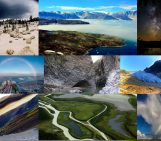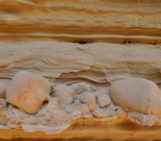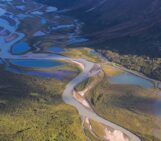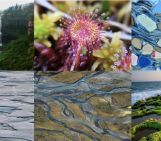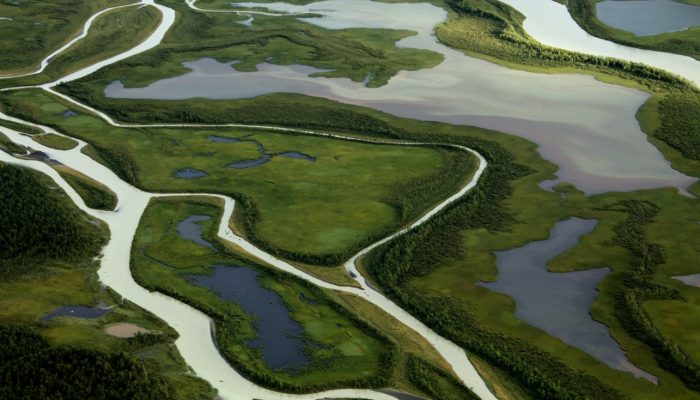
There are handful true wildernesses left on the planet. Only a few, far flung corners, of the globe remain truly remote and unspoilt. To explore and experience untouched landscapes you might find yourself making the journey to the dunes in Sossuvlei in Namibia, or to the salty plain of the Salar Uyuni in Bolivia. But it’s not necessary to travel so far to discover an area where humans have, so far, left little mark. One of the last wilds is right here in Europe, in the northern territories of Sweden. Today’s spectacular photograph of the Laitaure delta is brought to you by Marc Girons Lopez, one of the winners of the 2016 edition of the EGU’s Photo Contest!
The photograph shows a part of the Laitaure delta, at the entrance of Sarek National Park (Northern Sweden). Sarek is one of the oldest national parks in Europe and it is often considered to be one of the last wild areas in Europe. The Sami people, however, have traditionally used these lands.
This delta is formed by the Rapa River when it flows into Lake Laitaure. The Rapa River springs from the Sarektjåkkå glacier and is fed by over thirty glaciers. The specific flow of the Rapa River — the ratio between its flow and the area of its catchment — is the highest in Sweden. The magnitude of the flow has strong seasonal fluctuations which are reflected in the sediment transport, which can be as high as 10,000 tons per day during the summer. This heavy sediment load gives the river its characteristics greyish colour. The different colours in the backwater zones may be produced by dissolved organic matter from decomposing vegetation.
The delta in this area is flanked by patches of montane forests along the river banks in an area otherwise covered by marshes. Regarding the fauna, according to Wikipedia the Eurasian teal, the Eurasian wigeon, the greater scaup, the red-breasted merganser, the sedge warbler and the common reed bunting are common in the Laitaure delta.
By Marc Girons Lopez, researcher at the Centre for Natural Disaster Science, Uppsala University
Imaggeo is the EGU’s online open access geosciences image repository. All geoscientists (and others) can submit their photographs and videos to this repository and, since it is open access, these images can be used for free by scientists for their presentations or publications, by educators and the general public, and some images can even be used freely for commercial purposes. Photographers also retain full rights of use, as Imaggeo images are licensed and distributed by the EGU under a Creative Commons licence. Submit your photos at http://imaggeo.egu.eu/upload/.

